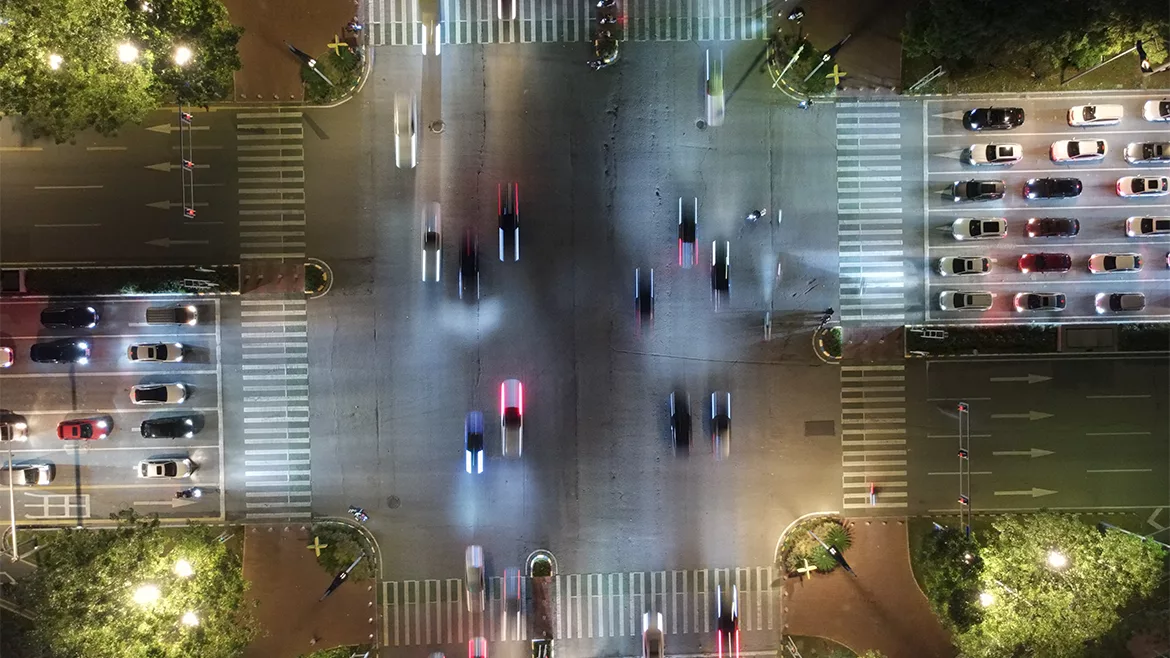The Decision Layer: Taking Your Fleet Management Tech Stack to the Next Level
Modern technology is essential for streamlining operations and staying ahead in today’s competitive trucking industry. Many companies rely on transportation management systems (TMSs) like McLeod and Trimble and telematics platforms like Samsara, Motive, and Geotab. These powerful tools become the driving force behind efficient, effective operations — but trucking companies need to add other tools to maximize their tech stacks.
The key to unlocking true ROI often comes down to integrations. A TMS or telematics platform serves as the core of a trucking company’s tech ecosystem, but organizations need to identify the right third-party integrations for building out that ecosystem.
At Optimal Dynamics, we offer a Decision Automation Platform that plays an essential role in the tech stacks of enterprise trucking companies by acting as the decision layer for logistics. Our technology uses the underlying data in your TMS and telematics platforms to help you automate the day-to-day load planning and dispatching decisions that can be time-consuming and difficult for your team members to make with confidence.
As the industry faces mounting pressure from regulations, driver shortages, and volatile demand, digital transformation is no longer optional. While implementing a strong TMS or telematics platform is important (and often required), building an ecosystem of integrated technologies that automate and optimize the decision-making process is what will drive long-term success and profitability.
Read on to discover how the right tech ecosystem — including Optimal Dynamics — can revolutionize your day-to-day decision-making and drive the ROI your company needs.
How Optimal Dynamics Supercharges Your TMS
At Optimal Dynamics, we offer a number of TMS integrations, including connections to McLeod, Trimble’s TMW.Suite, TruckMate, PCS Software, SSI PowerPRO, and other platforms, helping you automate decisions and improve efficiency across your processes and workflows. Through integrations with these platforms, Optimal Dynamics allows trucking companies to make optimized, real-time decisions around load planning, dispatching, and request for proposal (RFP) responses. Adding Optimal Dynamics to your TMS ultimately leads to improved asset utilization and profitability.
To optimize dispatch decisions, our Decision Automation Platform gathers an extensive array of data, which is supplied through two-way integrations with TMS systems like McLeod. These two-way integrations create a seamless data flow, enabling quick implementation of the platform and fast results — even for the largest, most complex fleets. Many joint Optimal Dynamics and McLeod customers have exceeded their set revenue, load volume, and loaded mile goals.
“We’ve been benefiting from using McLeod for over twenty years, but we’re now reaching new levels. The real-time dispatching tool within the Optimal Dynamics platform is built for speed. It acts as a supercharger to McLeod.” —Deen Albert, VP of Operations at Grand Island Express
You can download the full Grand Island Express case study to learn more.
When you implement Optimal Dynamics, you gain access to multiple tools. Our Bid solution helps trucking companies identify the most valuable lanes and optimal volumes to bid on. Our Plan solution allows trucking companies to simulate the impact of changes to operations to build the most optimal freight networks. And our Execute solution empowers trucking companies to choose the best freight and assign the optimal driver in real time.

How Optimal Dynamics Creates Better Driver Experiences
At the end of 2024, the trucking industry was short roughly 78,000 drivers. Creating outstanding driver experiences is more important than ever amid this labor shortfall, but meeting driver preferences without automation is challenging.
Optimal Dynamics helps deliver needed automation through integrations with leading telematics platforms like Motive, Samsara, and Geotab. The real-time location and hours of service (HOS) data captured by telematics platforms allow Optimal Dynamics to optimize dispatch and load acceptance decisions based on a carrier network’s current and future status.
The result is that trucking companies are better positioned to meet driver preferences, commitments, and create better driver experiences. In the long run, these improved experiences help trucking companies secure and retain the best drivers in a competitive environment.
The Complexity of Modern Trucking Operations
Why is there urgency around technology, ecosystems, and integrations right now? The answer is that the trucking industry is facing a series of challenges that manual processes and dated technologies can’t overcome. Those challenges include:
- The Ongoing Freight Recession: The freight recession has lasted longer than the bull market during the COVID-19 pandemic. Demand has fluctuated significantly as shippers try to optimize for our new supply chain reality. This has left carriers facing significant financial pressure.
- Tight Margins and Rising Costs: Operational costs are higher than ever, including the cost of fuel, maintenance, and insurance premiums. Margins are tight, and trucking companies must make difficult decisions to stay afloat.
- Traditional, Manual Processes: Historically, trucking companies have handled load planning and driver assignments by region with dozens of planners and dispatchers. These manual processes are inefficient and prone to error. Ultimately, this leads to suboptimal decisions and missed revenue opportunities.
- A Reliance on Human Intuition and Experience: Relying on human intuition and experience can often lead to poor decisions, especially when choosing loads and allocating resources effectively.
New technologies can help address these challenges by automating processes and creating future-ready, resilient networks. For example, Optimal Dynamics uses artificial decision intelligence to optimize dispatch systems, dynamically plan loads, and ultimately deliver increased revenue per truck.
Future-Proofing Your Trucking Operations With Integrated Tech
No trucking company can see what the future holds. Integrating powerful ELD, telematics, TMS and optimization solutions is an effective way to build the ecosystem needed to face the challenges of today and to future-proof against the challenges of tomorrow.
Optimal Dynamics is a powerful solution your trucking company can add to enhance your current tech stack. With Optimal Dynamics in place, you can automate decisions related to bidding, planning, and executing. The results include streamlined operations and greater revenue and profitability.
Ready to maximize the ROI you get from your existing tech stack? Get started with Optimal Dynamics.







